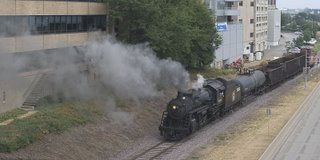
Welcome to the 7th Circus of the Spineless!
We have all manner of posts for you, this month. With this handy dichotomous key, we can help you identify any post you might come across. Be sure to key out your specimen properly, or you might be surprised what "Inverteblogs" will appear.
1a. Post is not about Porifera ........................................ 2
1b. Post is about a sponge:
Circadiana (a.k.a. coturnix) with: sponges have circadian clocks?
2a. Blog is about an arthropod ...................................... 3
2b. Blog deals with a mollusk ........................................ 8
2c. Blog is about an echinoderm:
Medlar Comfits regales us with: Breakers Laundry
3a. Blog deals with Chelicerata ..................................... 4
3b. Blog caontains Lepidoptera ..................................... 5
3c. Blog deals with Diptera ........................................... 6
3c. Blog deals with Coleoptera .......................................7
3d. Blog deals with an insect that looks like another:
Bev provides the audience with: Insect Imposters
4a. Post is about a big spider in New Zealand:
White Tail Spider thanks to Pete
4b. Post is about a smaller spider in the northern hemisphere:
Bev with Spider Ranch
5a. Post is about moths and light pollution:
Rigor Vitae presents a Moth in the night sky
5b. Subject of post looks like a carpet:
Cindy brings us Scaled Wings
5c. Blog has picture of moth just sitting there:
Ben has a picture of A moth hanging upside down.
5d. Moth is in florida:
thingfish23 finds out that Sometimes they come back
6a. Blog discusses halteres:
Budak tells us A tale of two-pteras
6b. Post is about insects eating insects:
Ben has a picture of A light snack?
6c. Perhaps the most disturbing post in the circus:
Thoughts from Kansas forces us to confront Sometheing we don't want to have - ever.
7a. Post gets inspiration from the ancient Egyptians:
Medlar Comfits praises Dung Beetles.
8a. Mollusk has a really funky shell:
Aydin found a Frankensnail.
8b. Mollusk has been attacked, sometimes repeatedly:
Pascal found evidence of Snail predation.
8c. Last but not least:
tai haku has pictures of Colorful Squid
Apologies that this is a little late - I got lots of good posts. Hope you enjoy them as much as I did.






